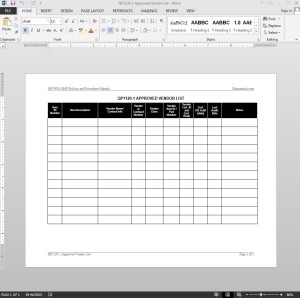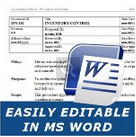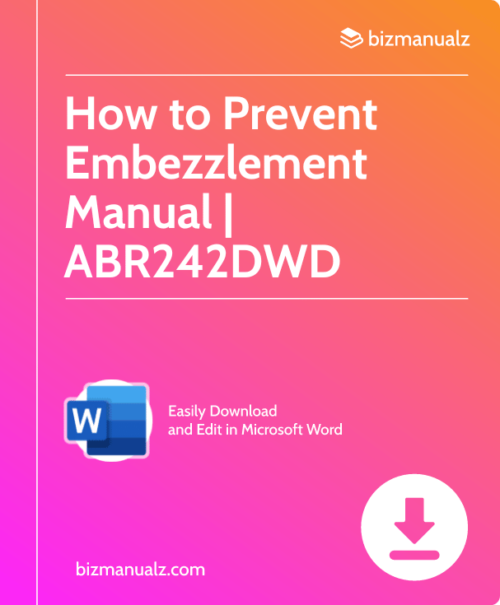ISO9001 2015 Approved Vendor List Template
Are you looking for a comprehensive and easy-to-use template for your Approved Vendor List (AVL)? Look no further than the ISO9001 2015 Approved Vendor List Template from Bizmanualz.
This template is designed to help you create a list of approved vendors that meet the requirements of ISO9001 2015. It includes all the necessary sections and fields to ensure that your AVL is complete and accurate.
The template is available in Microsoft Word format, making it easy to customize and edit to fit your specific needs. You can add or remove sections as needed, and the template is fully customizable to match your company’s branding and style.
With the ISO9001 2015 Approved Vendor List Template, you can easily track and manage your approved vendors, ensuring that you are always working with the best suppliers. The template includes fields for vendor information, product or service details, and approval status, making it easy to keep track of all your vendors in one place.
Plus, because the template is designed to meet the requirements of ISO9001 2015, you can be confident that your AVL is compliant with international quality standards. This can help you improve your overall quality management system and ensure that your products and services meet the highest standards of quality.
Don’t waste any more time creating your AVL from scratch. Get the ISO9001 2015 Approved Vendor List Template from Bizmanualz today and start managing your vendors with ease.
Approved Vendor List ISO Template
The Procurement Manager should maintain a QP1120-1 APPROVED VENDOR LIST, to contain information on vendors that have demonstrated they are capable of meeting the company’s quality and other requirements. The Approved Vendor List ISO Template should include, at a minimum:
- Vendor name
- Vendor item ID/part number
- Vendor ID
- Vendor certifications
- Vendor contact information
- Scope of registration, and more.
The Approved Vendor List ISO Template may be organized by vendor, product name, order number, or by any other item of key information. When a vendor has proved during its probationary period that it is capable of meeting requirements, the Procurement Manager should add it to the list.
Disqualified vendors should be removed from the QP1120-1 APPROVED VENDOR LIST (or may be changed to “removed” status) and the date of disqualification/removal noted only when a suitable replacement is identified, from which the company begins receiving material. The Procurement Manager shoud notify a removed/disqualified vendor of its status in writing; a copy of the disqualification notice should be placed in that vendor’s file.
 Approved Vendor List ISO Template Details
Approved Vendor List ISO Template Details
Pages: 01
Words: 39
Format: Microsoft Word 2013 (.docx)
Language: English
Manual: Quality Assurance Policy Statement and Procedures
Procedure: ISO Supplier Evaluation Procedure QP1120
Type: Log





















Christopher Nettles –
The ISO standards I am most familiar with (9001 and 13485) use the term “Supplier”. I believe words matter, and we should avoid confusion with the words we choose. Therefore, shouldn’t this template be titled “Approved Supplier List ISO Template | QP1120-1”?
Chris Anderson –
The most recent version of ISO 9001:2015 standard changed the term “supplier” to “external Provider” to extend the scope to include processes, products, and services such as consulting, software development — including system integration and application service providers (ASPs) — and other services. Since ISO 9001 is used by a wide range of organizations like Governments, schools, and hospitals, the intent was to widen the scope beyond traditional raw material “suppliers” found in manufacturing.